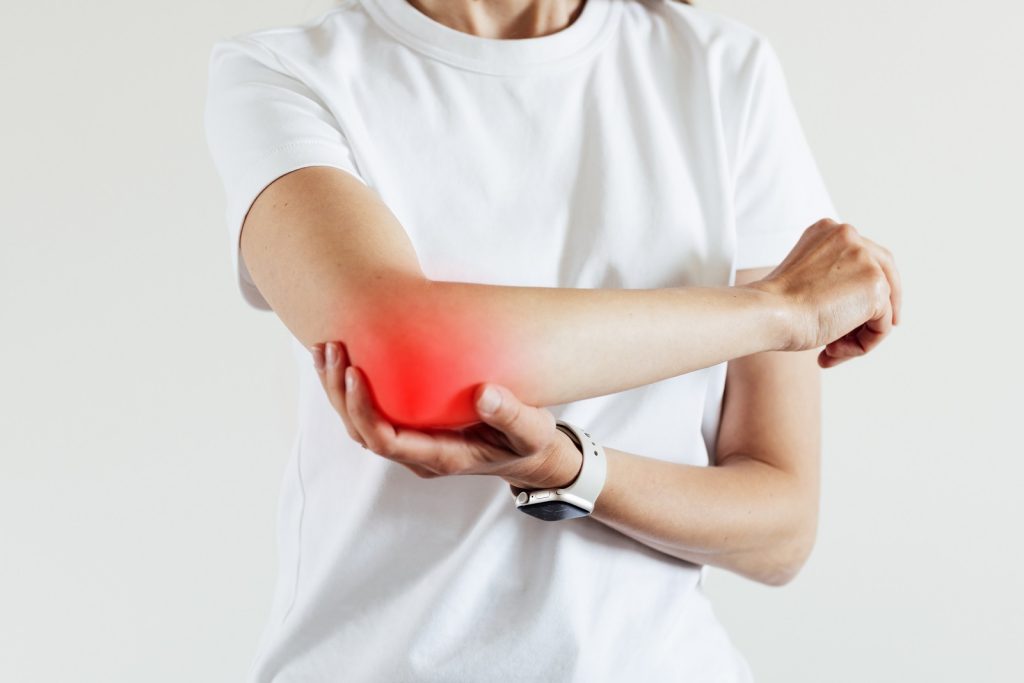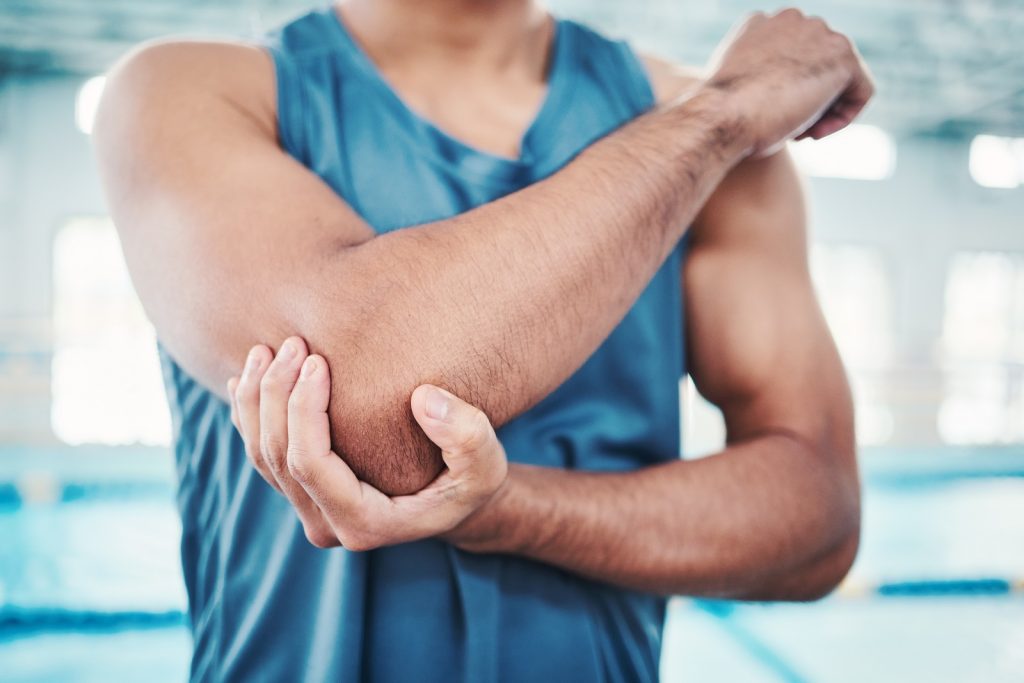Tennis Elbow
Tennis elbow, clinically known as lateral epicondylitis, is a common condition characterized by pain and inflammation on the outer side of the elbow. Despite its name, tennis elbow can affect individuals who participate in a variety of activities that involve repetitive arm movements, not just tennis players. This condition primarily involves the tendons that attach to the lateral epicondyle, a bony bump on the outside of the elbow.
Causes
Tennis elbow is typically caused by repetitive stress or overuse of the forearm muscles and tendons, leading to microscopic tears in the tendon attachment at the lateral epicondyle. Activities that commonly contribute to tennis elbow include tennis, racquetball, gardening, painting, carpentry, and repetitive computer mouse use. Poor technique, improper equipment, or inadequate warm-up can increase the risk of developing this condition.

Symptoms of Tennis Elbow
Tennis elbow, or lateral epicondylitis, is characterized by several common symptoms that may develop gradually over time. These symptoms typically include:
- Pain: The hallmark symptom of tennis elbow is pain and tenderness on the outer side of the elbow. Individuals may experience discomfort when gripping objects, lifting, or performing activities that involve wrist extension, such as using tools, typing on a keyboard, or playing sports like tennis or golf. The pain may radiate down the forearm and worsen with specific movements or activities that stress the affected tendons.
- Weakness: Tennis elbow can lead to decreased grip strength and difficulty performing tasks that require forceful gripping or wrist extension. Individuals may struggle with activities such as shaking hands, turning a doorknob, or lifting objects due to weakness and discomfort in the affected arm.
- Stiffness: Stiffness and limited range of motion in the elbow joint are common symptoms of tennis elbow. Individuals may experience stiffness, particularly after periods of inactivity or upon waking in the morning. The elbow may feel stiff and difficult to fully extend or flex, impacting mobility and flexibility.
- Numbness or Tingling: In some cases, individuals with tennis elbow may experience numbness or tingling sensations that radiate down the forearm and into the fingers. These sensations, known as paresthesia, may indicate nerve irritation or compression associated with the condition. Numbness or tingling may occur intermittently or persistently and can affect daily activities and hand function.
Diagnosis
Diagnosing tennis elbow typically involves a combination of medical history, physical examination, and imaging studies. A healthcare provider will assess the patient’s symptoms, review their medical history, and perform a physical examination to evaluate tenderness, range of motion, and strength in the affected elbow. X-rays or other imaging tests may be ordered to rule out other potential causes of elbow pain, such as fractures or arthritis.
Treatment
Treatment for tennis elbow focuses on relieving pain, reducing inflammation, and promoting healing. Common treatment options include:
- Rest: Avoiding activities that aggravate symptoms and giving the elbow time to rest and heal.
- Ice Therapy: Applying ice packs to the affected area for 15-20 minutes several times a day can help reduce pain and inflammation.
- Physical Therapy: A structured rehabilitation program that includes stretching and strengthening exercises can improve flexibility, strengthen the forearm muscles, and promote proper biomechanics.
- Medications: Over-the-counter pain relievers such as ibuprofen or acetaminophen may be recommended to alleviate pain and reduce inflammation.
- Bracing: Wearing a forearm brace or splint can provide support and relieve strain on the injured tendons, particularly during activities that may exacerbate symptoms.
- Corticosteroid Injections: In some cases, corticosteroid injections may be administered directly into the affected area to reduce inflammation and provide short-term pain relief.
Prevention of Tennis Elbow
Preventing tennis elbow, or lateral epicondylitis, involves adopting proactive measures to reduce the risk of developing this common overuse injury. Here are some strategies to help prevent tennis elbow:
- Warm Up Thoroughly: Before engaging in physical activities that involve repetitive arm movements, it’s essential to warm up adequately. Gentle stretching exercises and dynamic movements can help prepare the muscles and tendons for activity, reducing the risk of strain and injury.
- Use Proper Technique and Equipment: Whether playing sports or performing repetitive tasks, using proper technique and equipment is crucial for preventing tennis elbow. Ensure that you use the correct grip size and racket tension when playing tennis or racquet sports. Maintain proper form and posture during activities to minimize stress on the elbow joints and surrounding tissues.
- Gradually Increase Activity Intensity: Avoid overloading the elbow muscles and tendons by gradually increasing the intensity and duration of physical activities. Sudden spikes in activity level or excessive repetitive movements can strain the tendons and lead to overuse injuries like tennis elbow. Instead, progress slowly and listen to your body’s signals to avoid overexertion.
- Incorporate Forearm Strengthening and Stretching Exercises: Including forearm strengthening and stretching exercises in your regular fitness routine can help improve muscle balance, flexibility, and resilience in the forearm muscles and tendons. Focus on exercises that target the wrist extensors and flexors, as well as forearm pronation and supination movements. Examples of effective exercises include wrist curls, wrist extensions, forearm pronation/supination with a dumbbell, and wrist flexor stretches.
When to Seek Medical Attention
If symptoms of tennis elbow persist despite conservative treatments, or if there is significant loss of function or range of motion in the elbow, it is important to seek medical attention. In some cases, more aggressive treatment options, such as corticosteroid injections or surgery, may be necessary to alleviate symptoms and restore elbow function.

Contact Us
If you’re experiencing symptoms of tennis elbow and seeking expert guidance and treatment, we recommend scheduling a consultation with Dr. Burhan. With extensive experience in orthopedic care and a compassionate approach to patient needs, Dr. Burhan is dedicated to providing personalized solutions to alleviate your discomfort and improve your quality of life. Take the first step toward relief and recovery by reaching out to us today.


